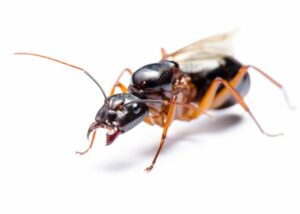
What are Carpenter Ants?
Carpenter Ants are very large and fast, and generally black to brownish in color, sometimes even appearing two-toned. A Carpenter Ant worker can give a strong bite or pinch. They range from ¼ to ¾ of an inch long.
Carpenter Ants Treatment
Carpenter Ants are best treated by a professional because the inspection is such an important part of treatment-the person doing the treatment must locate the nests and foraging trails. A pest management professional has hundreds or even thousands of hours of experience looking for bugs, and will notice things that most homeowners will pass over.
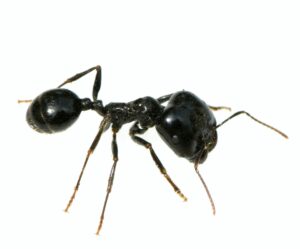
What are Ants?
Ants are some of the most common pests seen around homes and businesses. There are many species of ants with lots of different characteristics. One of the reasons hiring a professional pest management company is so important is that a professional will better be able to identify the particular ant species that is bothering you, and knowing its particular biology and customary habits, will be able to more easily eliminate the infestation.
Ants Treatment
Ants are very resilient and can pose a remarkably difficult challenge to homeowners. One reason why ants can be so difficult to eliminate is because often the ant nest (or nests, as is often the case!) need to be located and directly treated. Oftentimes these nests are tricky to find, and or can be located in hard-to-reach or even inaccessible void areas such as behind insulation in a crawlspace under the home, or in a wall hollow. A professional pest control technician is familiar with the tricks that ants play, and has a few tricks of his own!
Depending on how your home or business is built, your Expert Pest Control Service Technician may use one or more control techniques including direct treatment of nest(s), perimeter treatments, and or even granular or liquid baits, along with non-chemical control methods such as habitat modification (trimming ivy, shrubs, and bushes around home, and tree limbs that touch the home) and indirect control efforts such as moisture reduction under the home.
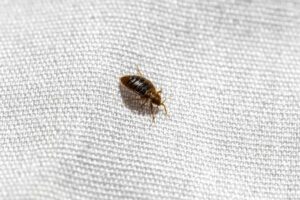
What are Bed Bugs?
Having risen in prominence over the last decade to become America’s # 1 pest problem, Bedbugs are small, flat, reddish bugs that vaguely resemble ticks. In their younger molting forms, they can be clear, almost translucent. Bedbugs are excellent climbers and hitchhikers who can hide almost anywhere due to their flat bodies, and their exclusive food source is the blood of warm bodies of both humans and animals!
Bed Bug Treatment
With the possible exception of termites, no pest so greatly manifests an obvious need for professional help than the Bedbug! Homeowners and business owners often invest a lot of time and money in bedbug self-treatments with various and assorted methods (including throwing out expensive furniture and bedding pieces, and yet not resolving the infestation because it had spread already!) before throwing up their hands in frustration and contacting a professional. Remember, it is NOT a sign of weakness to get some help, and in the case of bedbugs, getting professional help is a sign of wisdom!
At Expert Pest Control, we bring many resources to bear on the bedbugs bothering your family or disrupting your business. We use a full battery of both chemical (insect growth regulators, neurotoxins, etc.) and non-chemical control methods (heat and steam, as well as mattress encasements) in our powerful assault on these little beasties! You may be asked to do some preparatory work before our visit-this will help us do the most thorough treatment for you.
Another advantage in contacting Expert Pest Control for Bedbug Elimination is that we treat the entire home, not just a room or two. This is because bedbugs migrate (move around) so easily, that an incomplete treatment will not yield the results you desire, the results you deserve. We will stop at nothing to rid your home or business of bedbugs!
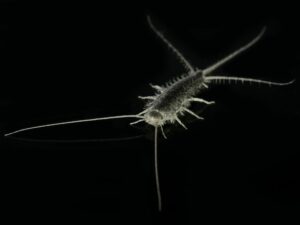
What are Silverfish?
Silverfish are from ½ inch to ¾ inch long, and have flattened, long and slender bodies, broad at the front, smaller at the back. Silverfish, are well, generally silver in color (!), and can run very quickly. They are generally found close to their food source of any of a number of different foods containing proteins and carbohydrates-such as paper, starch, casein, glue, oats, beef, cotton, sugar, dead insects, or linens. Even with such a diverse and special diet, Silverfish manifest a capability to live for a long time without any food-which capability makes them marvelously resilient to control and eradication efforts!
Silverfish Treatment
Clutter reduction and removal, as well as moisture reduction and control must typically be combined with insecticidal application to eliminate a silverfish infestation. Insecticidal dusts and or space treatments may be in order, as well as crack-and-crevice efforts. Your Expert Pest Control Service Technician will know just what to do to maximize his or her treatment of your home or business!
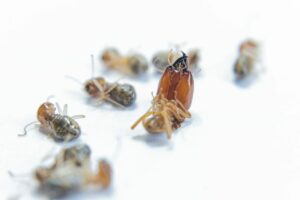
What are Termites?
Termites outweigh humans on earth, and cause more than $ 5 billion dollars in damage to homes and structures every single year. Termites are social insects that live in family groups called colonies. They communicate with each other by means of smells called pheromones. Termites can be loosely categorized by nesting area, namely Drywood, Dampwood, and Subterranean. Here in Upstate South Carolina, we have the Subterranean Termite exclusively. Termites have a caste system where the labor is divided into soldiers, workers, and reproductives, with the main reproductive being called a queen.
Termite Treatment
Termites outweigh humans on earth, and cause more than $ 5 billion dollars in damage to homes and structures every single year. Termites are social insects that live in family groups called colonies. They communicate with each other by means of smells called pheromones. Termites can be loosely categorized by nesting area, namely Drywood, Dampwood, and Subterranean. Here in Upstate South Carolina, we have the Subterranean Termite exclusively. Termites have a caste system where the labor is divided into soldiers, workers, and reproductives, with the main reproductive being called a queen.
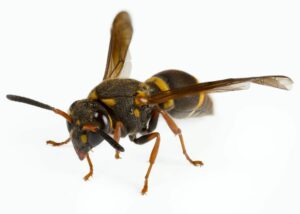
What are Bees & Wasps?
Bees & Wasps come from a family called Hymenoptera (Greek for “membranous wing”), and there are thousands of species of them in North America alone, let alone worldwide. Most bees (and some wasps) are social insects, and wasps can be solitary. Most bees and wasps can and do have a painful sting.
Bees & Wasps are flying and stinging insects which can really ruin an individual’s day-particularly if that individual is allergic to their stings. This type of allergic, called anaphylactic, is of a rapid onset and can be life-threatening! The venom from bee and wasp stings can otherwise tend to be most upsetting to infants and the elderly.
Bees & Wasp Treatment
Treatment of Bees & Wasps is best left to a pest management professional not only because homeowners are often unsuccessful in getting rid of the infestation, but because much collateral damage and related problems can occur. For example, many times the nest itself is an aerial nest, high off the ground, and must be completely removed-so sometimes this involves working on ladders or cutting into walls to access the nest. Oftentimes, a homeowner will not know the best time of day to treat the bees or wasps, and will not have the proper protective equipment. Your Expert Pest Control Service Technician will do a safe and thorough treatment of your bees and wasps
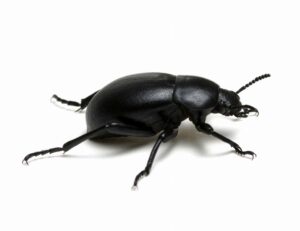
What are Ground Beetles?
Professional Pest Control textbooks affirm the existence of over 2,000 species of ground beetles in the United States and Canada. Wow! Ranging in size from 1/16 to 1 inch long and usually found outdoors, they are generally black in color and of course, they crawl!
Ground beetles may be attracted to moisture and or bright lights on buildings, thus drawing them indoors. They most often become a problem in the warm summer months, congregating around buildings or homes in rather large numbers.
Ground Beetle Treatment
Expert Pest Control has had excellent results controlling ground beetle populations through our IPM (Integrated Pest Management) approach, utilizing both chemical and non-chemical control methods, harborage reduction, exclusion, habitat modification, moisture remediation, and both direct and in-direct control methodologies.
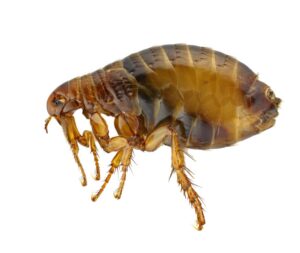
What are Fleas?
Fleas are cousins to lice, and both are from a family of bugs called ectoparasites. A parasite lives on another organism, called the host, and obtains nourishment from it. Fleas are pests of both humans and animals.
Their amazingly strong legs can give them a 7 to 8 inch vertical jump, or a 14 to 16 inch horizontal leap. For a critter only a tiny fraction of an inch long, that is miraculous! If only fleas could play basketball! Fleas are small, wingless insects which can transmit diseases such as murine typhus and bubonic plague. Fleas feed on the host’s blood. Yuck!
Flea Treatment
Your Expert Pest Control Service Technician is going to need your help to secure a solid victory over the fleas that are bugging you and your family. Our treatment will involve spraying insecticides to kill adult fleas, and will include a residual effect which will last after we leave, but we will need you to vacuum every day following our treatment. This is because fleas are bugs that have a life cycle where when they are young they build these super hard cocoons called pupae, and at the time of our treatment for you, a decent number of the young fleas yet to be born are in these pupae and cannot be killed until they come out of their cocoon. Your daily vacuuming vibrates the rugs and carpets and encourages these little rascals to come out of their cocoons and get some of that residual insecticide on them, causing them to die soon after. It is normal to see spikes in the apparent flea population following a flea treatment. This is the pupae guys coming out onto the scene. It is not a sign that the treatment did not work-keep up with your daily vacuuming and these guys will be gone soon.

What are Cockroaches?
With an estimated 3,500 species worldwide, Cockroaches are very common insect pests which species come in assorted sizes, usually brownish or black in color. Disease-producing organisms and bacteria have been found on cockroaches, and they are definitely a threat to human health and well-being, primarily through the spoilage of food and the vectoring of gastroenteritis, but also due to the causation of asthma in humans who live amongst high roach populations.
Cockroaches are remarkably resilient to efforts to exterminate them, and have earned a place in the pest professionals’ Hall of Fame for “Hard-to-Treat Insect Pests!” One of the reasons why is because they can develop pesticide resistance. Another reason is their ability to hide in difficult-to-access harborages, as well as their ability to reproduce quickly.
Cockroach Treatment
Whether residential or commercial, Expert Pest Control has the tools and the talent to get rid of these little beasties! Our professional service technician may use a “cocktail” mixture of insecticides to fry these roaches, as well as insect-growth-regulators (IGR’s) to hinder the reproductive ability of those surviving stragglers that withstand the chemical onslaught. Additional corrective sanitation recommendations may be made, and further trapping, monitoring, or baiting may be recommended.
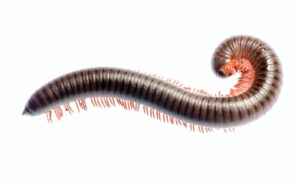
What are Millipedes?
Millipedes typically live outdoors in moist areas. They are brownish, from 1 to 1 ½ inches long, and most active in the evenings. Millipedes tend to have round body shapes and move slowly. They feed on damp vegetable matter, even if decayed, or if green and new. Millipedes may protect themselves by secreting a stinky odor. Yuck!
Millipedes are sometimes known as “thousand-leggers” which is what their name literally means! Bug doctors affirm these little guys occasionally will come indoors.
Millipede Treatment
Millipede treatment will usually involve harborage removal and exclusion, and or insecticidal treatment. Residual sprays and barrier treatments can also be effective. Your Expert Pest Control Service Technician will know what to do, and will do his or her best to provide an effective treatment, safe for you and your family.
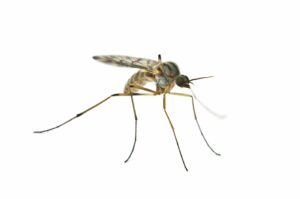
What are Mosquitos?
Aaahhh….the nice summer day, a delightful barbecue with the neighbors, a pool party in the afternoon, so many wonderful things to attend to in the summer. Bzzzzztttt….smack! Another mosquito! Mosquitoes are found from the tropics to the arctic, and they are definitely active here in Upstate South Carolina!
Female Mosquitoes feed on blood, and can carry diseases such as West Nile Virus, Zika Virus, Malaria, Yellow Jack, Dengue, Encephalitis, and for your dog, Canine Heartworm. Mosquitoes are a big time problem in many areas during the summer months.
Mosquitoes lay their eggs in areas of standing or stagnant water, and there are several species in our area.
Mosquito Treatment
Expert Pest Control has had excellent results with our Mosquito, Flea, and Tick program, which consists of seasonal monthly misting treatments from May to September. Our trained and certified technician will load an insecticide into his or her backpack mister, fire up the engine blower, and then walk around your home or business as the backpack mister places the treatment along the yard, shrubberies, and other landscape fixtures. The advantage of our specialized equipment is that our backpack mister breaks up the insecticidally-laced water into tiny droplet molecules that provide excellent coating of bushes and grasses, giving a much more complete and lasting residual treatment.
These monthly exterior treatments will help to break the life cycle of the mosquito as it rests in the treated shrubberies, bushes, and yard. If additional or stronger control is in order, we have special larvicidal tablets with which we can treat areas of standing water around your home or business.
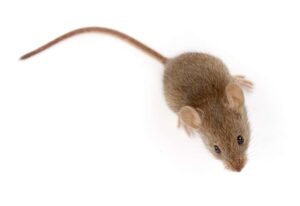
What are Rats & Mice?
Rats and mice have been around a long time, and with the possible exception of ants, are the most common household and commercial pest. Rats and mice are called commensal rodents, which means “they share the table!” Through the loss and spoilage of food, as well as damage formed by their incessant gnawing (the name “rodent” itself means “to gnaw”), rats and mice cause damage which runs into the millions of dollars. They can also carry some nasty diseases, including typhoid, dysentery, hantaviruses, trichinosis, rat-bite fever, plague, salmonellosis, and murine typhus, among others.
Rats & Mice Treatment
Expert Pest Control has been successful time and again in many rodent infestations, and we will bring that experience and training to bear on freeing your home from this nasty and potentially very dangerous problem. The bulk of our rodent treatment program consists in using baits, which baits are the least toxic available to non-target animals. Our baits are much less dangerous to you, your children, and your pets than are the ones typically available at the grocery store or hardware store. In addition, our baits are locked in tamper-resistant stations to keep pets and kids out of them. We will place the baits in the areas where they will do the most good, which areas we know from years of experience.
We may also assist you with exclusion modifications to your home and business, as well as any sanitation tips that may be in order.
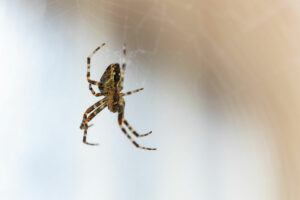
What are Spiders?
Though differentiated from insects proper due to a different number of legs and lacking wings, most people do not much care to have spiders sharing their living spaces. In addition, certain spiders like the Brown Recluse and Black Widow can be downright dangerous to both humans and pets. Spiders eat insects who come to be trapped in their webs. Most (but not all) spiders have eight eyes.
Spider Treatment
One of the things that makes spiders tricky to treat is that they don’t often or easily come into direct contact with an insecticidally-treated surface area because they spend so much time in and on their web. To get the victory over a persistent spider problem may require some extreme measures, and your Expert Pest Control Service Technician knows just what to do!
One of the keys to victory over spiders is to use IPM, Integrated Pest Management. This means not only chemical control methods, but non-chemical control methods also. IPM means not only using direct approaches, but indirect also. Perimeter treatments, space treatments, crack-and-crevice treatments, are all examples of chemical efforts, and some non-chemical could include harborage reduction (habitat modification-clutter reduction), exclusion, and vacuuming of webs, eggsacs, and even of the spiders themselves!
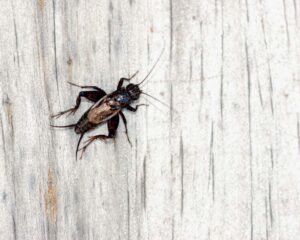
What are Crickets?
Crickets are cousins to grasshoppers and katydids. The name “cricket” comes from the French language and approximates the chirping sound that they are so well known for emitting. Crickets are somewhat related to cockroaches, and likewise are omnivorous, eating all sorts of different foods including paper and even rubber. Crickets in a crawlspace or basement are typically a symptom of a moisture problem.
Cricket Treatment
Crickets are treatable both by insecticides and moisture reduction / habitat modification. Clutter in the affected area should be removed or minimized, and direct treatments combined with perimeter treatments will likely yield the best results. Your Expert Pest Control Service Technician will also show how moisture can be controlled with a dehumidifier and or sump pump and drain system, if needed. Sometimes baits can also be effective in cricket control.
Sometimes problem infestations are addressed by other indirect methods such as adjusting the number or type of electric lights left on around a building at night. Crickets are drawn to light, and this characteristic should not be lightly dismissed as a solution plan is drawn up.
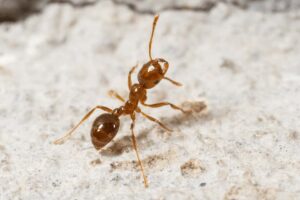
What are Fire Ants?
Fire ants mate when the temperature is between 70 and 95F, usually within 24 hours of rain. The humidity must be high and the wind calm. This can occur any time of year, but peaks in spring and fall months. Winged males and females fly into the air as high as 2,000 ft. After mating the males promptly die having fulfilled their only purpose. The newly mated females can fly as far as 2-3 miles before landing. Once they land, they tear their wings off and search for a suitable nesting site in the soil. Nearly 99.9% of all the females die before they are able to begin a nest because of predation and poor landing sites such as swimming pools and ponds.
This “queen to be” burrows a few inches into the soil and forms a chamber that she seals with a waterproof mixture of soil and saliva. The queen then begins to lay eggs. Using the energy reserves from her wing muscles, she rears a few young to adulthood. This takes about 45 days or less depending upon the temperature.
The new workers break out of the chamber and begin foraging for food. They care for the queen and the young. From this point on the queen does only one thing – lay eggs to the tune of 100,000 – 300,000 per year. She may live for 6-7 years.
Although fire ants are voracious predators, they do not eat solid foods. They place solids on the “lip” of the late stage larvae. The larvae secrete digestive enzymes into this “lip” and convert the solids to a liquid. All other ants feed through a process called trophallaxis where they pass this liquid food from ant to ant. This gives the colony built in “food tasters”. If an ant in the colony becomes sick due to bad food (or bait), the queen is not fed from that food source. She can always make more workers and the colony continues as long as she lives.
Fire ants forage when the surface soil temperature is between 70 and 95F. In the summer months, this is primarily at night. They may travel up to 100 yards from their mound in search of food. Bait strategies rely heavily on this behavior and allow us to treat away from sensitive areas while reducing the risk of pesticide contamination.
Fire Ant Treatment
Fire ants can be both dangerous and difficult to tackle on your own. Treatment strategies involve combinations of mound treatments and broadcast treatments using insecticides and / or bait applications. Success relies heavily on making the correct application at the right time. It requires an Expert to rid your home and yard from fire ants.
Expert Pest Control uses proven fire ant control to protect your family and your yard. Our services take into consideration individual characteristics of your yard to get rid of active infestations and prevent future infestations. If fire ants return, we will return at no additional cost to you.
Get in Touch
Hours
Monday – Saturday:
8:00AM – 7:00PM